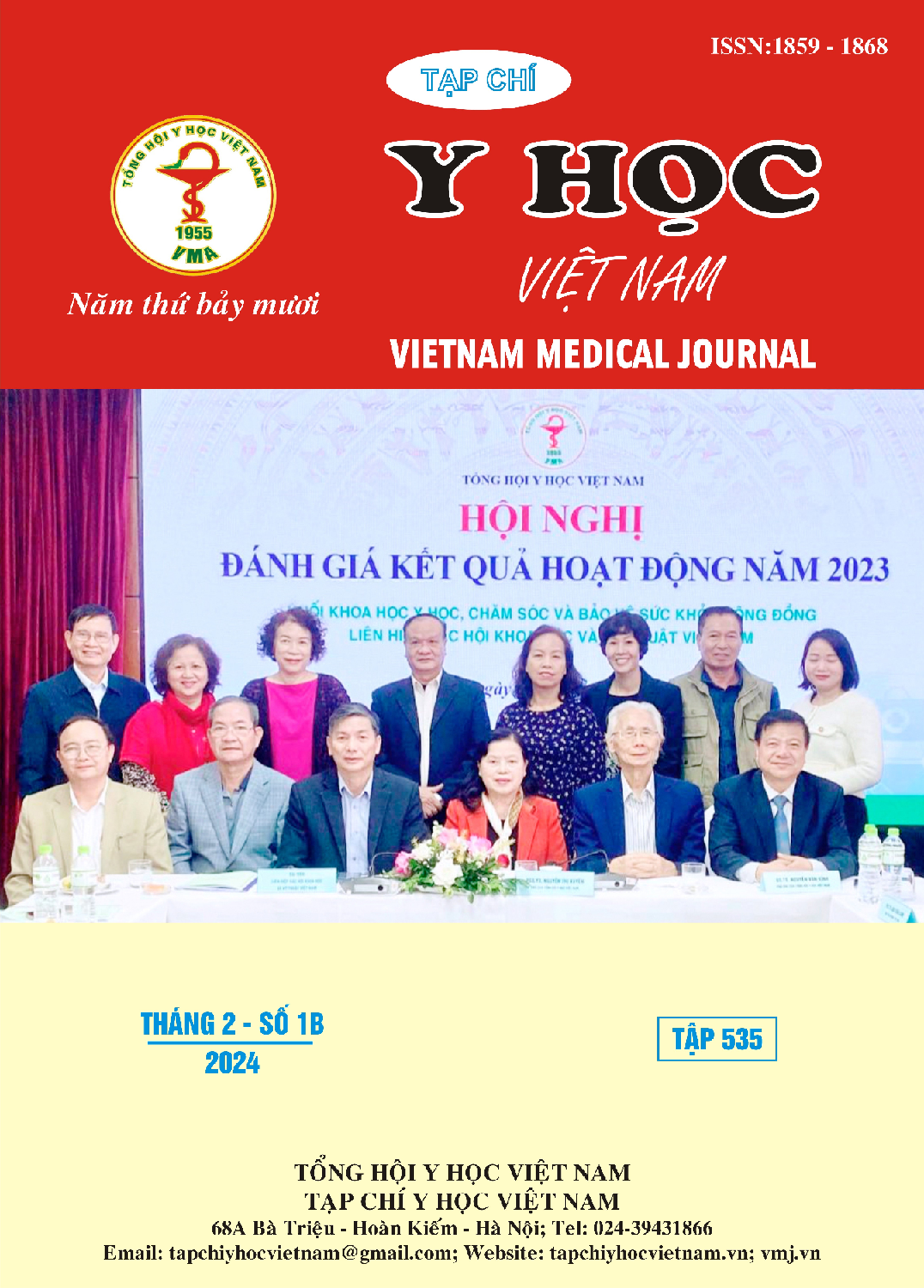ĐÁNH GIÁ TÍNH AN TOÀN VÀ HIỆU QUẢ CỦA TRIỆT PHÁ QUA ỐNG THÔNG RỐI LOẠN NHỊP TIM BẰNG NĂNG LƯỢNG TẦN SỐ RADIO TẠI VIỆN TIM THÀNH PHỐ HỒ CHÍ MINH
Nội dung chính của bài viết
Tóm tắt
Đặt vấn đề: Việc điều trị rối loạn nhịp tim đã được cách mạng hóa nhờ khả năng điều trị dứt điểm cho nhiều bệnh nhân bằng triệt phá qua ống thông với tần số radio, thay vì phải dùng thuốc suốt đời. Triệt phá qua ống thông đã phát triển nhanh chóng qua nhiều năm và đến nay đã được chứng minh là liệu pháp đầu tay trong điều trị ở hầu hết bệnh nhân rối loạn nhịp tim có triệu chứng. Tại Viện Tim TP. Hồ Chí Minh, việc triệt phá qua ống thông đã được thực hiện trên nhiều phổ bệnh rối loạn nhịp tim khác nhau, tuy nhiên dữ liệu đánh giá tổng thể về tính an toàn và hiệu quả của thủ thuật vẫn còn hạn chế. Mục tiêu: Xác định tính an toàn và hiệu quả của triệt phá qua ống thông rối loạn nhịp tim bằng năng lượng có tần số radio tại Viện Tim TP. Hồ Chí Minh. Đối tượng và phương pháp: Nghiên cứu đoàn hệ tiến cứu các trường hợp rối loạn nhịp tim được triệt phá qua ống thông bằng năng lượng tần số radio từ tháng 5/2022 đến 08/2023 tại Viện Tim TP.Hồ Chí Minh. Kết quả: Tổng số 186 bệnh nhân (BN) liên tiếp, tuổi trung bình 43,38 ± 14,42 tuổi, nữ chiếm 64% (n=119). NNVLNNT chiếm 33,9% (n=63), NNVLNT 10,2% (n=19), hội chứng WPW 26,9% (n=50), NTTT/NNT 27,4% (n=51) và CN/NNN chiếm 1,6% (n=3). Tỷ lệ thành công chung triệt phá rối loạn nhịp là 98,4% (n=183), trong đó tỷ lệ thành công triệt phá NNVLNT chiếm 100% (n=63), NNVLNT 94,7% (n=18), hội chứng WPW 96% (n=48), NTTT/NNT 100% (n=51) và CN/NNN 100% (n=3). Thời thủ thuật trung bình là 106 ± 37,39 phút. Tỷ lệ tái phát trong vòng 3 tháng là 1,6% (n=3). Biến chứng thường gặp là tụ máu vùng bẹn là 4,08% (n=8), đau ngực sau thủ thuật 5,37% (n=10), rung nhĩ hay blốc nhĩ thất thoáng qua 5,92% (n=11 BN), chèn ép tim 0,005% (n=1), không xãy ra trường hợp blốc nhĩ thất cần đặt máy tạo nhịp vĩnh viễn (0%) và tử vong (0%). Kết luận: Triệt phá rối loạn nhịp tim qua ống thông với tần số radio có tỷ lệ thành công cao, biến chứng và tỷ lệ tái phát thấp. Những phát hiện này hỗ trợ chiến lược triệt phá qua ống thông như liệu pháp đầu tay ở những bệnh nhân rối loạn nhịp tái phát có triệu chứng. Từ khoá: Rối loạn nhịp tim, an toàn và hiệu quả, triệt phá rối loạn nhịp tim qua ống thông bằng tần số radio
Chi tiết bài viết
Từ khóa
NNVLNNT: Nhịp nhanh trên thất vào lại nút nhĩ thất, NNVLNT: nhịp nhanh trên thất vào lại nhĩ thất, NNN-CN: nhịp nhanh nhĩ-cuồng nhĩ, NTTT: ngoại tâm thu thất, NNT: nhịp nhanh thất.
Tài liệu tham khảo
2. Doldi F, Geßler N, Anwar O, et al. In-hospital mortality and major complications related to radiofrequency catheter ablations of over 10 000 supraventricular arrhythmias from 2005 to 2020: individualized case analysis of multicentric administrative data. Europace. 2023;25(1):130-136. doi:10.1093/europace/euac146
3. Dionne A, Gauvreau K, O'Leary E, et al. Risk Factors for Early Recurrence Following Ablation for Accessory Pathways: The Role of Consolidation Lesions. Circ Arrhythm Electrophysiol. 2020; 13(11): e008848. doi:10. 1161/CIRCEP.120.008848
4. Lüscher TF. Supraventricular and ventricular tachycardias: risk factors, drugs, and ablation. Eur Heart J. 2017;38(17): 1271-1274. doi:10.1093/ eurheartj/ehx179
5. Althoff TF, Mont L. Catheter ablation of supraventricular tachycardias-a success story. Europace. 2023; 25(1):4-5. doi:10.1093/ europace/euac180
6. Chang SL, Tai CT, Lin YJ, et al. Electrophysiological characteristics and catheter ablation in patients with paroxysmal supraventricular tachycardia and paroxysmal atrial fibrillation. J Cardiovasc Electrophysiol. 2008;19(4): 367-373. doi: 10.1111/j.1540-8167. 2007.01065.x
7. Ibrahim Ali Sherdia AF, Abdelaal SA, Hasan MT, et al. The success rate of radiofrequency catheter ablation in Wolff-Parkinson-White-Syndrome patients: A systematic review and meta-analysis. Indian Heart J. 2023;75(2):98-107. doi:10.1016/j.ihj.2023.02.001
8. Lương Cao Sơn, Tôn Thất Minh, Đặng Vạn Phước. Hiệu quả và an toàn của cắt đốt nhịp nhanh vào lại nút nhĩ thất bằng năng lượng tần số radio ở người cao tuổi tại bệnh viện Đại học Y dược TP. Hồ Chí Minh. Tạp chí Y học Việt Nam 2023; 525,(1B),137-141


